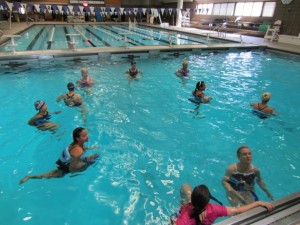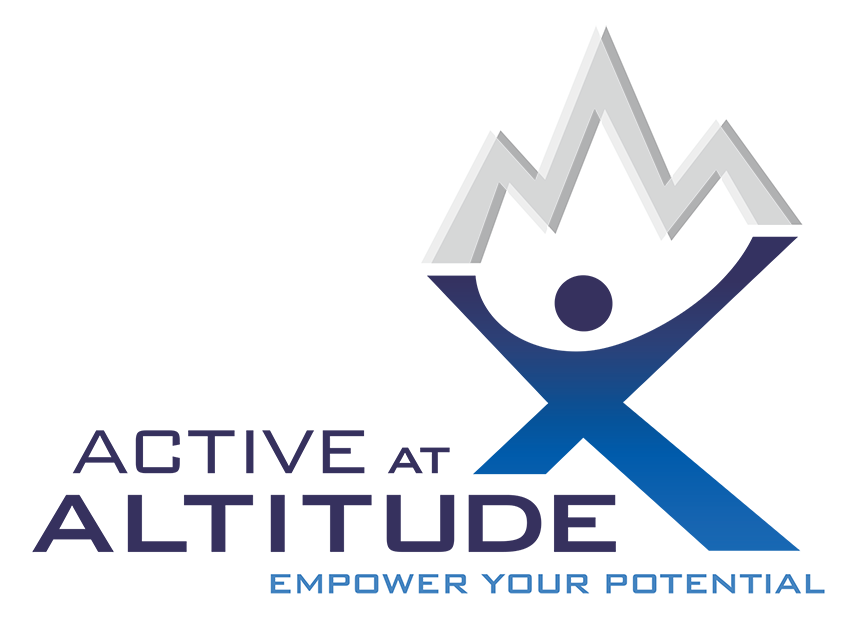[vc_row][vc_column][vc_column_text] Pool running is a widely used technique, often for rehabilitation from injury. It doesn’t require anything expensive in the way of equipment – most aquatic centers have aqaua jogger belts, so you don’t even need to buy anything new. On with your swim cossie, fasten the belt on the aqua jogger flotation belt, and into the water you go..When I broke my femur earlier in 2013, pool running helped to keep me sane while I wasn’t allowed to impact the healing leg running on dry land. I had long considered that pool running, or aqua jogging as it’s often known, had many other benefits besides just the traditional rehab route.
Pool running is a widely used technique, often for rehabilitation from injury. It doesn’t require anything expensive in the way of equipment – most aquatic centers have aqaua jogger belts, so you don’t even need to buy anything new. On with your swim cossie, fasten the belt on the aqua jogger flotation belt, and into the water you go..When I broke my femur earlier in 2013, pool running helped to keep me sane while I wasn’t allowed to impact the healing leg running on dry land. I had long considered that pool running, or aqua jogging as it’s often known, had many other benefits besides just the traditional rehab route.
I was introduced to pool running by my friend and ace coach, Bill Ruth. The most important part that I took away was the technique to use in the pool. The key objective is to mimic the biomechanics of running as closely as possible. The best way to do this is to use a high knee, A-step, perhaps much like you have used in drills or warm-up routines.[/vc_column_text][/vc_column][/vc_row][vc_row][vc_column width=”1/2″][vc_video link=”https://www.youtube.com/watch?v=dsamCiwQ9Ww”][/vc_column][vc_column width=”1/2″][vc_column_text]Bill has created a great video that demonstrates the technique really well. He also goes into explaining the variance in stride rate and how that impacts the specific energy system that a pool running session can impact. Rather than describe the technique to use, I will let Bill’s video expertly demonstrate.
I had long considered that pool running, or aqua jogging as it’s often known, had many other benefits besides just the traditional rehab route. During this year with the chance to run in the pool many times before I could get back to running, I had an opportunity to think about the many benefits that pool running can bring as part of a training program for runners, so here goes:[/vc_column_text][/vc_column][/vc_row][vc_row][vc_column][vc_column_text]
- Rehabilitation – this is the most often quoted reason for using pool running as a component in training for runners. While my femur was healing it certainly gave me the opportunity to be able to run without any impact. It also is a great workout combining the movement pattern with resistance moving through the water. I did find that I needed to come up with a mental strategy as moving slowly around the pool wasn’t cutting it for me compared to the beautiful runs I could be doing on the mountain trails here in Estes Park. So, each session I would run a different trail in my mind, replaying the memory of that trail in detail including the changes in surface, gradient, etc. Each session in the pool became a joy and a chance for me to connect with nature and the trails outside in my mind. The time passed much more quickly this way, and I never became bored and instead looked forward to each session.
Running with a friend Jaime this morning, she mentioned that she had ditched listening to music while pool running rehabilitating after a fracture. She said that it allowed her to focus on quietening her mind and not get lost in distractions and be aware of the present. Sounds like a great plan! - Two a days – if you are looking to increase mileage, then one of the most popular ways to do this is to run twice on a number of days. This means additional stress on your musculoskeletal system depending on the surface you are running on, with concrete and tarmac being top of the stress tree here. Pool running gives you an opportunity to add an additional workout to a day with out that additional physical stress on the body – neat. You get the training effects, and can also use the session to recover from a harder workout earlier in the day. Works really well.
- Cadence – because pool running is based around cadence, (a quicker stride changing up the energy system worked in a specific session), it brings to the forefront of your attention one of the most important factors in running technique. Cadence is often the first thing that I will work when coaching an athlete, with most runners running with a cadence that is too low. Pool running gives an athlete the chance to appreciate how an increase in cadence feels. Given that the cadence for pool running to train your endurance base is 144 per minute, where we aim to hit around 180 on dry land, you can imagine that it is a darn hard workout, which of course it is. I have also noticed that I recover quickly from what feels like a hard workout, the lack of impact making a real difference. Of course tempo, speedwork and VO2 max are even higher! Anything that gets us to focus our attention where it needs to be, while also providing a great training stimulus, is good news in my book!
- Form check – we are often blissfully unaware of what our form is doing, unless of course we have the opportunity to have ourselves videoed! One very cool way of checking our movement patterns is to pool run. We actually get to feel the resistance of the water when we don’t have that luxury in air. We can make changes to our running form and get real time feedback on how that feels. This is particularly useful for arm motion – try pushing your elbows outward while running in the pool and you will see what I mean! Another benefit is that we can make changes to form while at the same time miss that impact on the land – the pool is a great place to play and experiment with changes!
While you’re finding out about using your local aquatic center or pool, we encourage you to check out why you should be doing swimming workouts as well.
Active at Altitude provides personalized coaching, as well as women’s running camps, and trail running camps, both based in Estes Park, CO, and is the Official Training Partner for Vacation Races, who hold a series of 11 half marathons based at National parks around the US.
Contact Camp Director and Positive Running Coach Terry Chiplin.[/vc_column_text][/vc_column][/vc_row]
